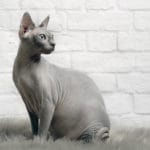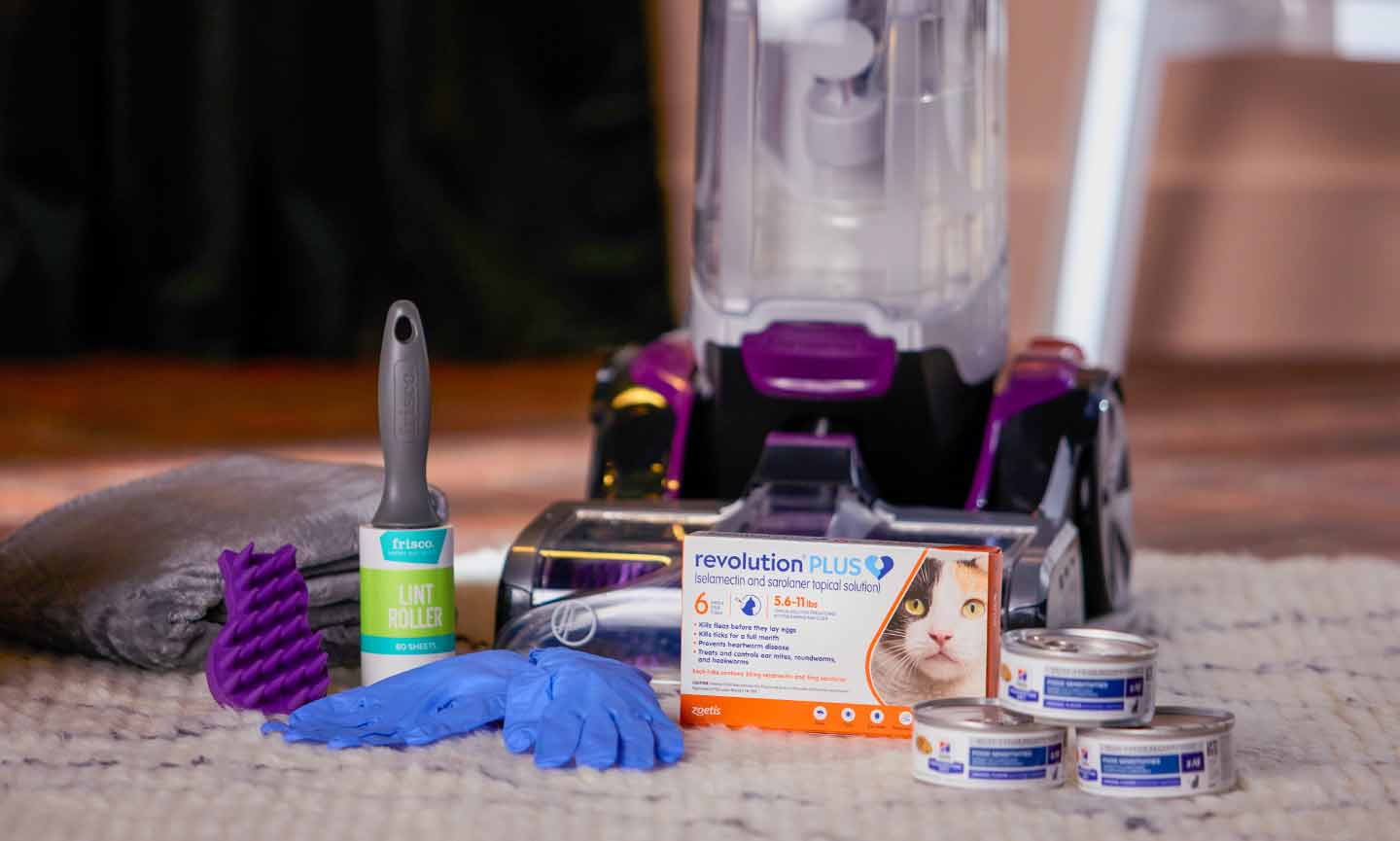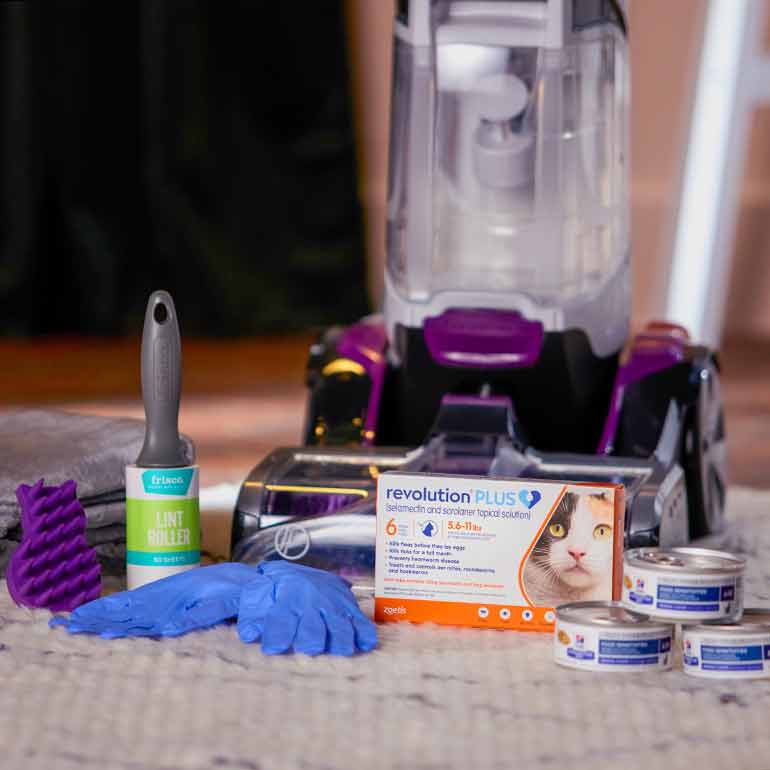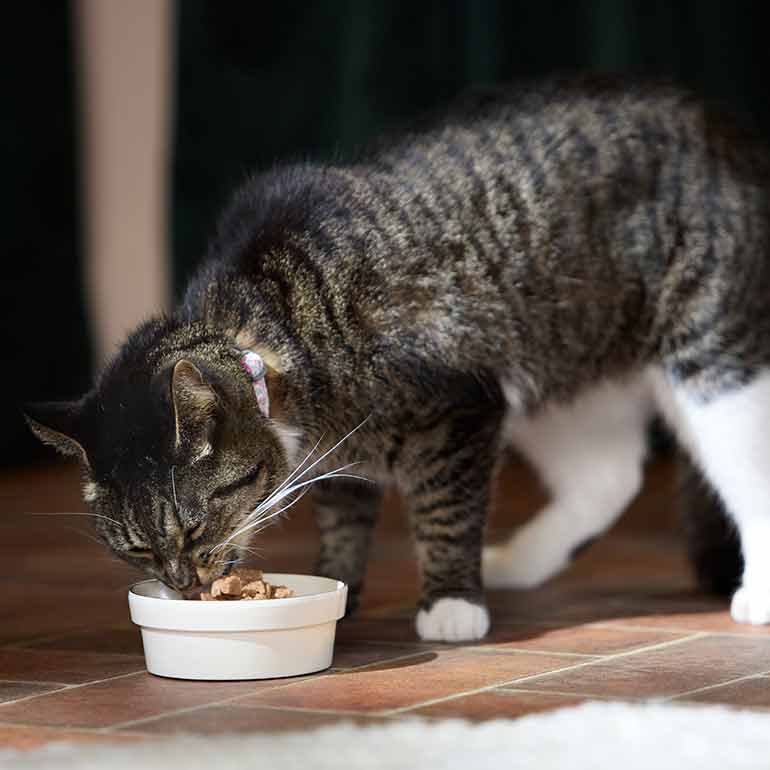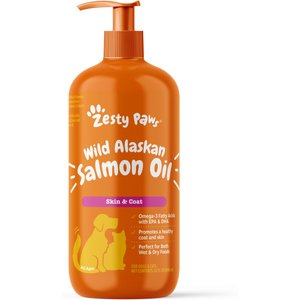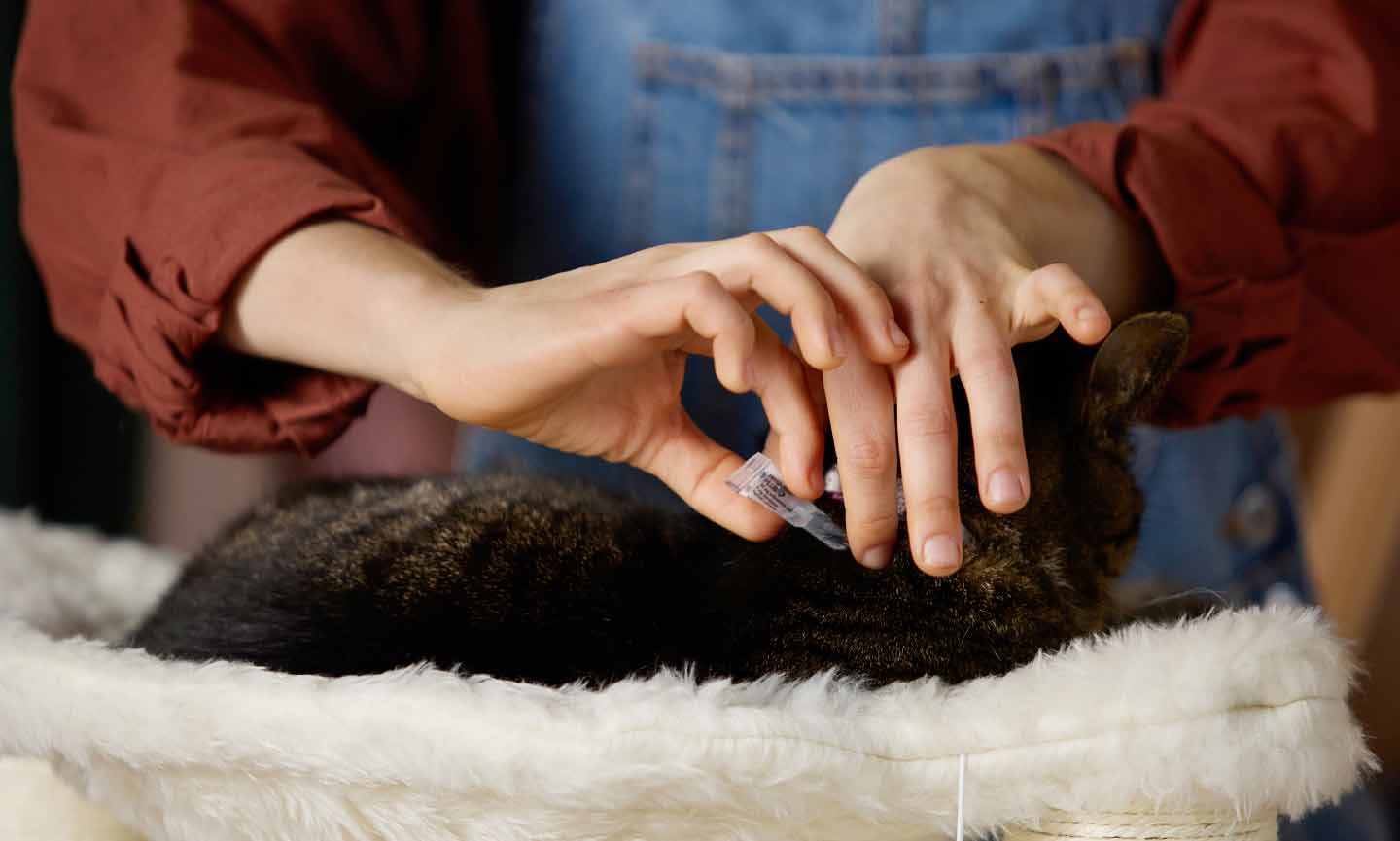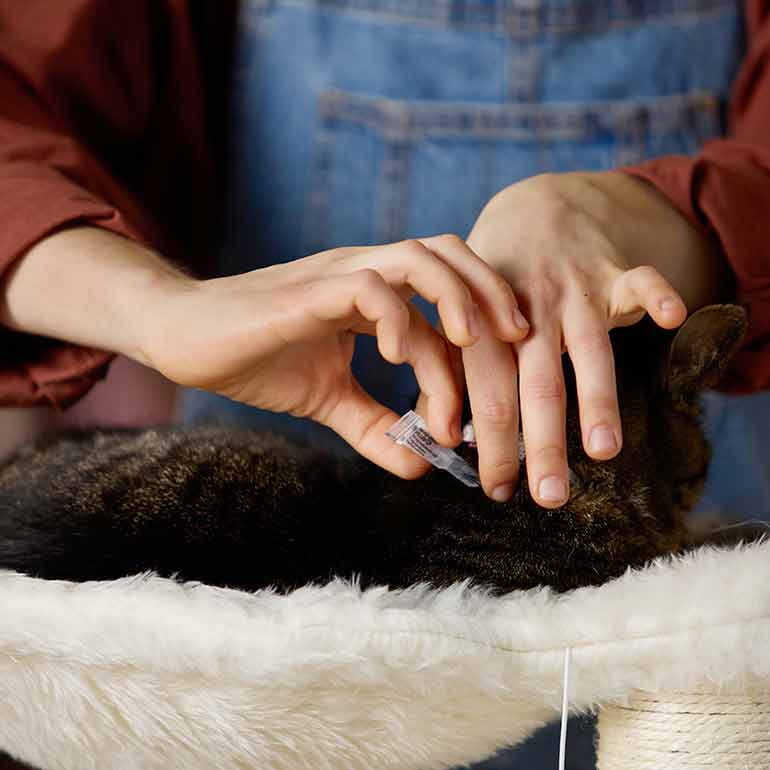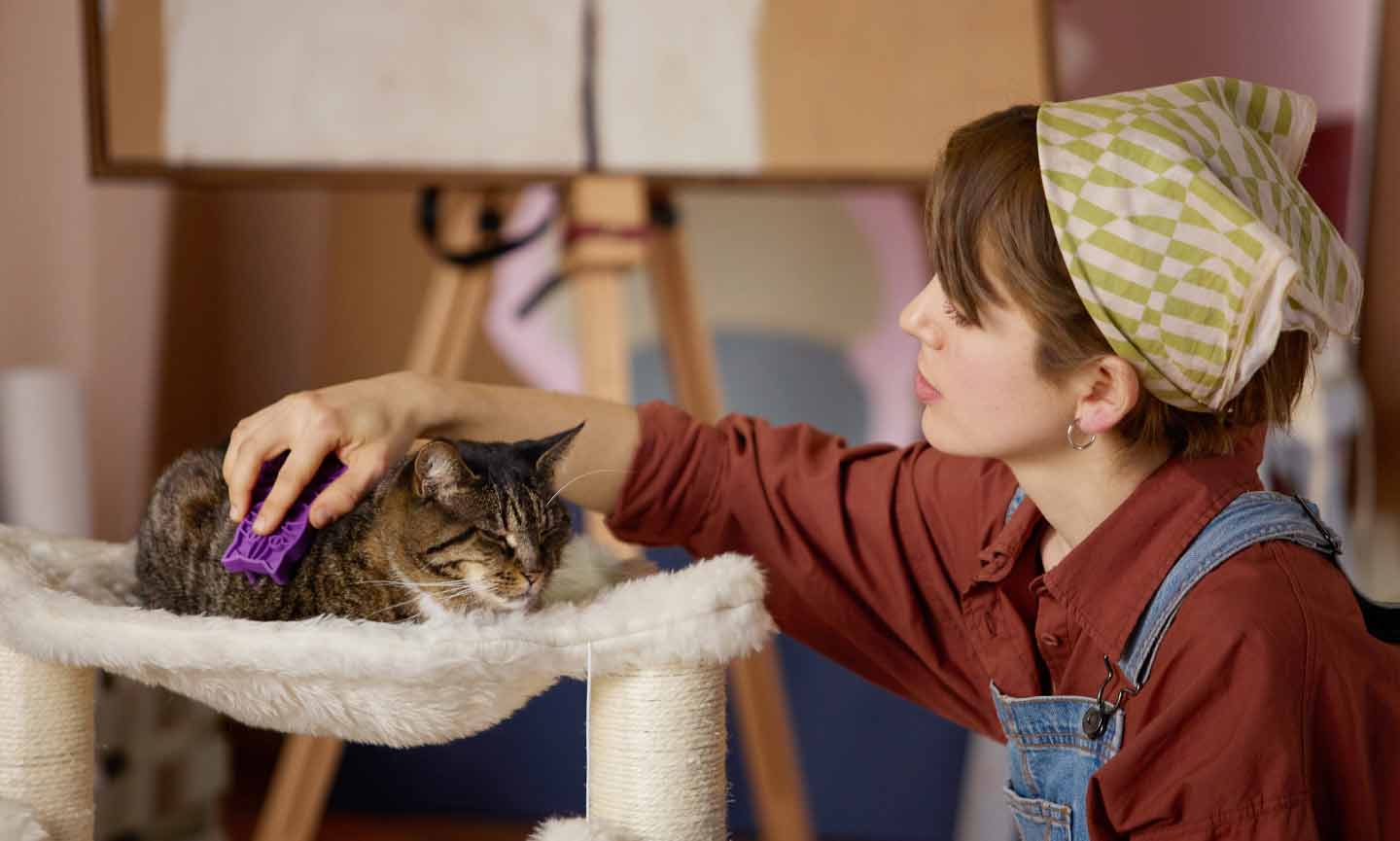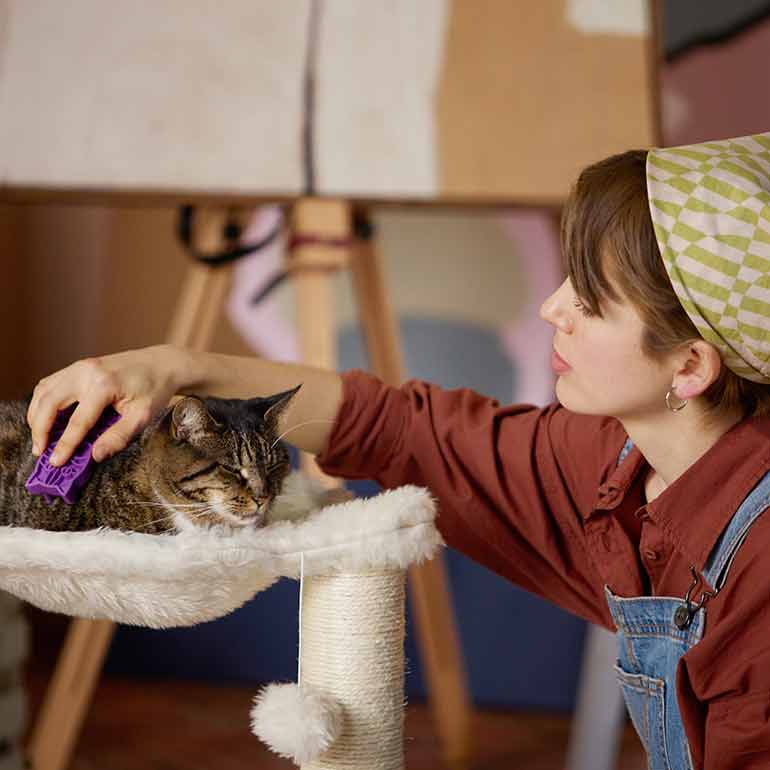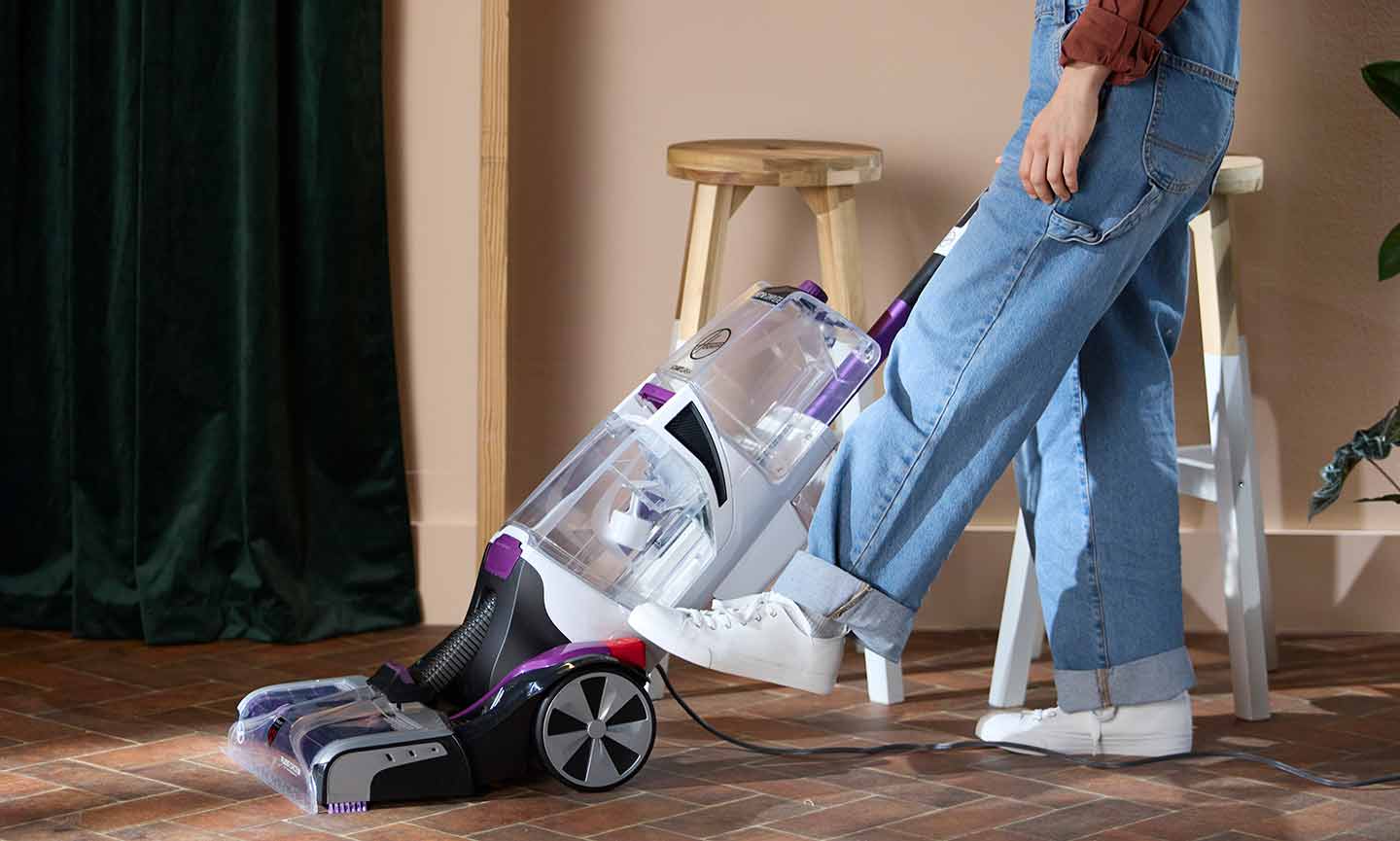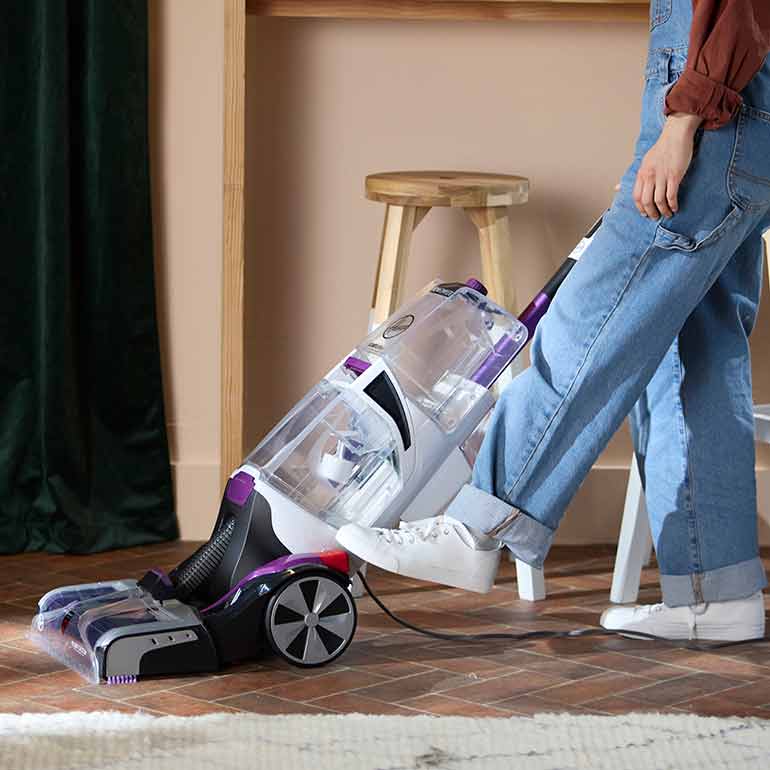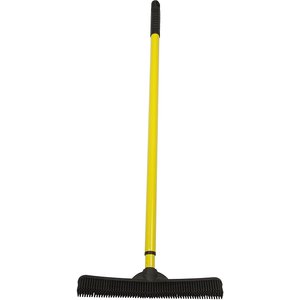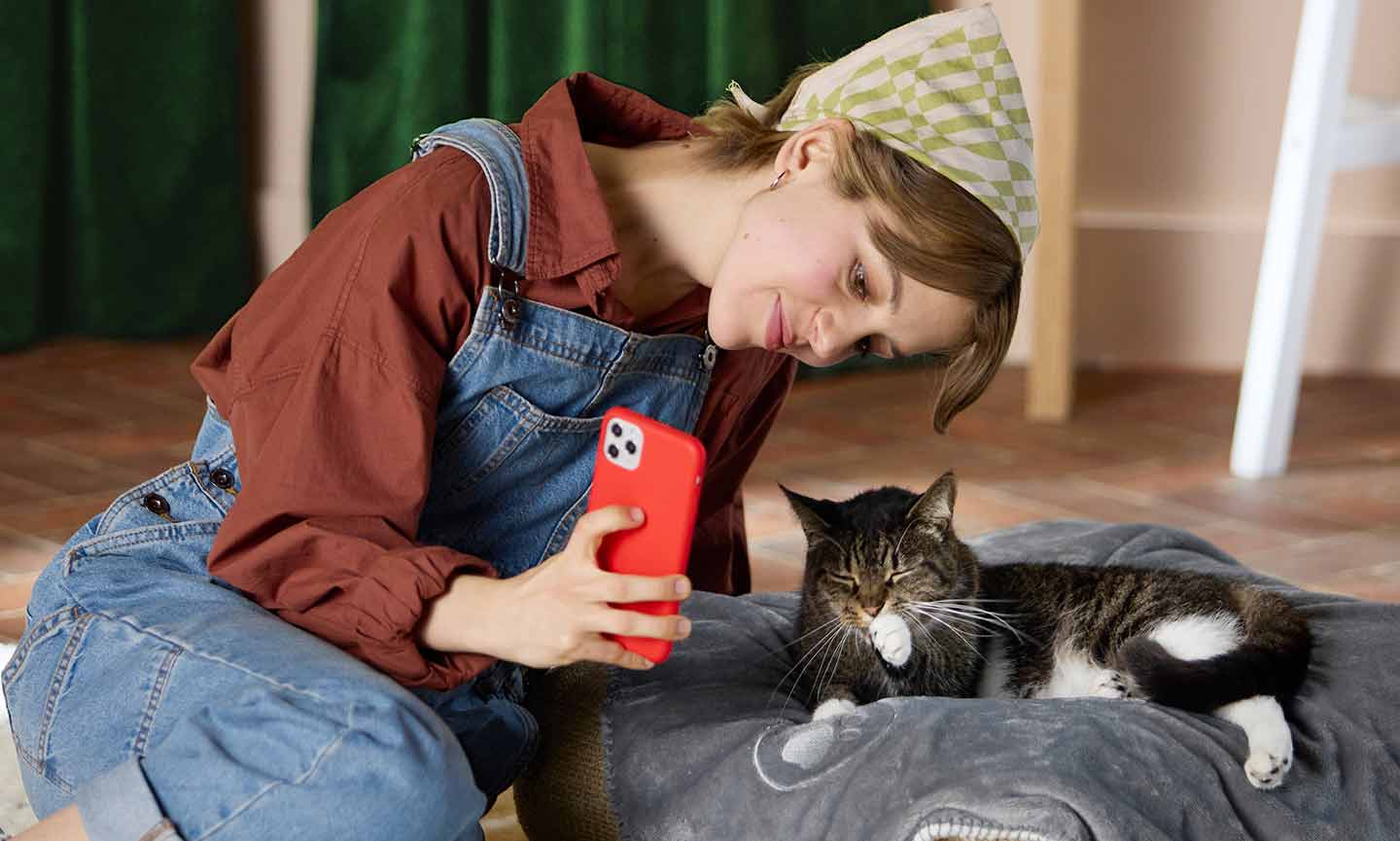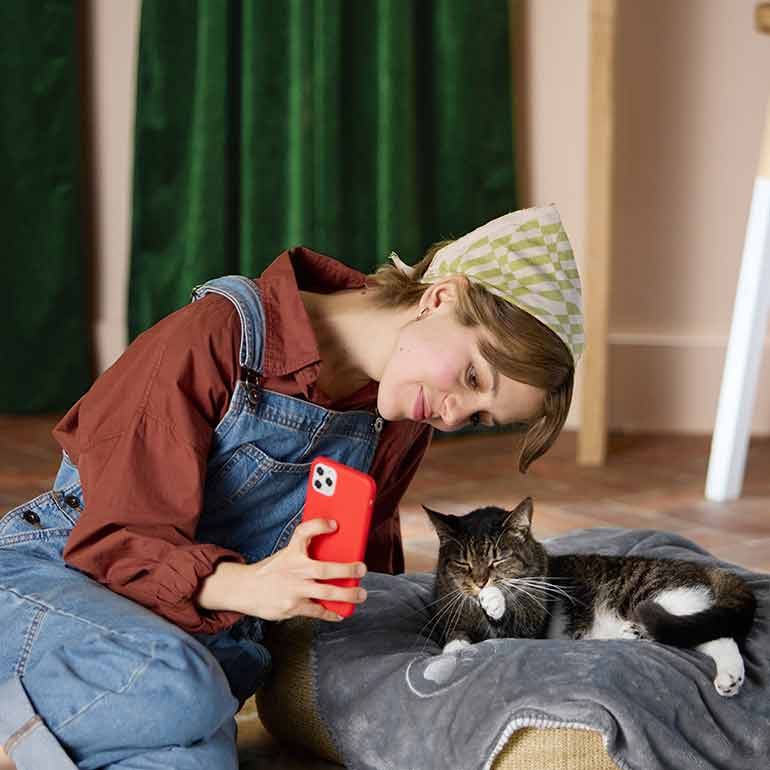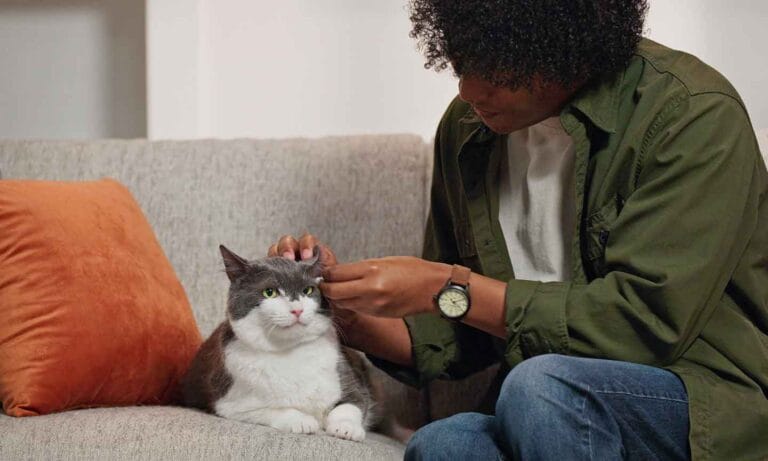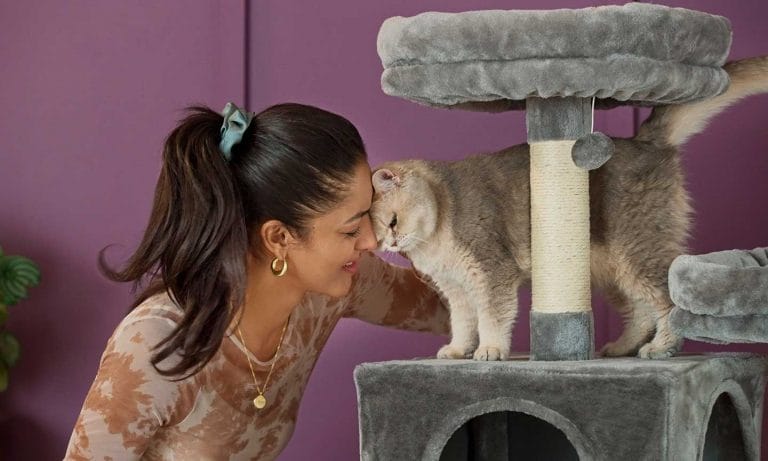Pet fur: It looks great on our cats, but on our clothes? Not so much. Not only does cat shedding lead to clothing covered in fur, but their hairs can stick to your furniture, wind up in your home-cooked meals (the worst!), and even heighten allergies and sensitivities for everyone living in the house.
Shedding is completely normal for both short- and long-haired cats, though certain breeds shed more than others and some experience an uptick during seasonal shifts. Whatever the case may be, here’s how to minimize the fallout and keep your home and clothing fur-free.
How to Manage Cat Shedding: Step-by-Step
1Gather Supplies
You’ll want to keep the following on hand to help tackle cat shedding:
- Nutritionally balanced cat food
- Flea and tick protection
- Deshedding cat brushing tools
- Pet blanket
- Vacuum cleaner (especially one designed to pick up pet hair)
- Lint roller, rubber gloves and/or a squeegee
- Cat supplements, such as fish oil and probiotics (optional)
Note that there are different types of brushing tools for long-haired cats vs. short-haired kitties. Brushes for short-haired cats typically have shallow teeth, while long-haired cat brushes have longer teeth so you can reach further into their coat. Make sure that you choose the appropriate option to provide max comfort during grooming sessions. If you’re not sure what to use, ask your groomer or vet for advice.
2Feed Your Cat a High-Quality Diet
In the same way you fuel your own body with nutritious foods, it’s important for your cat to eat a complete and nutritionally balanced diet. Not only does this help ensure your cat has a healthy skin and healthy coat—which can lessen the amount of shedding in some cats—but they’ll feel better in the short and long term.
Talk to your veterinarian about the best food for your cat. Need to make a switch? Follow this guide to changing your pet’s food to help the transition go smoothly. (Cats can be notoriously picky about their diet, after all!)
3Use Parasite Protection
Use parasite preventatives to help ward off fleas, ticks, ringworm, and other bugs that can cause fur and skin problems in your cat. These parasites don’t take any time off, so prevention is key all year long.
It’s important to consult your veterinarian to determine which medications are best for your pet—and to determine how often to give them. Cats with severe allergies to parasites, for example, may need a more robust treatment schedule.
4Groom Your Cat Daily
Regular brushing can help remove loose hair on your cat’s coat, which means less will end up on your couch and clothes—and in your cat’s belly, for that matter, so it has the added benefit of reducing hairballs. Just a few minutes of brushing every day is all that’s needed.
In addition to choosing a tool that’s appropriate for your breed of cat, you may need to try a couple different options to see what your cat likes best. Anything from the shape of the brush to the firmness or softness of the bristles can determine how your cat reacts to being groomed. There are even gloves you can use to brush your kitty! Trust us, brushing your cat is a lot more enjoyable for you when it’s also enjoyable for your cat.
If your cat will tolerate them, deshedding tools are slightly more aggressive than the average cat brush—but they also remove more pet hair during those high-shedding seasons.
5Clean Your Home
In addition to furniture covers, you'll need a quality vacuum. To win the war on fur, you need the best weapons—and your standard broom just doesn’t cut it. (Brooms mostly just move fur around your home.) A vacuum cleaner can pick up fur and trap it inside its canister. Plus, many come with special attachments to suck cat hair out of the nooks and crannies of your furniture.
You might need to run a vacuum over floors every one to two days in areas highly trafficked by pets, especially during high-shed seasons like spring and fall.
Finally, dry-wiping with pet hair remover tools can help keep cat fur under control, too. Consider these tactics:
- Keep lint rollers on hand. The sticky tape easily lifts fur off your clothes, furniture and walls.
- Slide on a pair of rubber gloves and rub down any areas such as sofas, fabric, and blankets that need extra cleaning. The fur will stick to the rubber, allowing you to collect it and toss it in the trash.
- Try a squeegee tool like the Pet Hair Magnet. The rubber blade will collect fur the same way rubber gloves will, especially if you dip it in water.
Why Is My Cat Shedding So Much?
Shedding hair and dander is natural, healthy and necessary for both indoor cats and outdoor cats. Long-haired breeds like Maine Coons and Ragdolls tend to shed more than shorter-haired cats like Bengals or Bombays—and of course, hairless breeds like the Sphynx don’t have much hair to shed at all!
But in general, cats shed and grow new fur throughout the year, with increased shedding when seasons change during the fall and spring, says Dr. Michelle Dulake, DVM, CEO of Fera Pet Organics in Los Angeles, and associate veterinarian at Veterinary Medical Center in Studio City, California.
However, there are some instances in which your cat sheds more than what’s normal. Excessive shedding can be caused by a range of issues, including:
Other cat health problems–such as hormonal changes or imbalances, cancer and thyroid issues—are less common but can also cause increased hair shedding.
Here are some signs that someone’s not quite right and that you should schedule a vet visit:
- Lack of grooming: This tends to happen when cats do not feel well due to being ill or cannot reach the area due to arthritis or pain.
- Increased grooming: On the other side of the coin, a cat that’s increased its grooming is also a sign they’re shedding a higher amount of hair.
- More hairballs: Sometimes it’s hard to notice an uptick in your cat’s grooming habits. An increase in hairballs is a potential sign they’re experiencing higher amounts of hair loss, though.
- Bald spots, areas of thinning, or an otherwise thin coat
- Skin infections: If your cat’s skin looks irritated, flaky, red or swollen, that’s a sign of an allergy, wound or other underlying medical problem.
- Bug infestations: Mites, fleas, ticks and other bugs can hang out in your cat’s fur and skin, leading to skin irritation and hair loss.
More Fur-Free Tips
Share:

